Who is a refugee?
The 1951 Convention relating to the Status of Refugees (and its 1967 protocol), to which Australia is a signatory, defines a refugee as:
Any person who owing to a well founded fear of being persecuted for reasons of race, religion, nationality, membership of a particular social group or political opinion, is outside the country of his/her nationality and is unable, or owing to such fear, is unwilling to avail himself/herself of the protection of that country.
However, the terms "refugees" and "migrants" are frequently used interchangeably. The two words refer to very different groups of people.
Boat people threats?
There's never been any credible evidence of a particular threat to national security.
Five thousand arrivals a year by boat seeking asylum is a drop in the Pacific Ocean of a migration program of hundreds of thousands.
The number of refugees Australia accepts is set each year and has remained between 13,000 and 14,200 since 2003. This year the number will be 13,750, regardless of the number of boats that arrive.
Over 3 million people have arrived by plane in the last 20 and about 50,000 over-stayed visas etc thus making them illegal immigrants. Boat people in numbers terms are a lot less than numbers by plane for illegal immigrant status. The media and political parties play to the fear of “boat people” and illegal immigrants.
The illusion of control
An Australian born citizens who marries a foreigner will find it difficult to bring his/her spouse to Australia. This injustice enforces the illusion that Australia is seriously in control of who and how many people arrive at our shores.
Our politicians are deliberately making political use of the "security threat" from boat people and creating a smoke screen to hide the main source of our our population growth - skilled economic immigration!
The hype of the “boat people” and “border security” is a smoke screen to draw attention away from the real source of the drain on our resources, and an impediment to our obligation to the resettlement of genuine refugees – economic migration!
Challenges of settlement
Statistically, women from refugee backgrounds have the highest unemployment rates in the Australian labour market. Along with our own unemployed, and those who lack opportunities to gain skills, they need to be protected from being replaced by the skilled imported here from overseas.
Becoming economically integrated and maintaining financial security is difficult for newly-arrived immigrants to Australia, who in some cases are excluded from the social welfare system for a significant period after arrival.
Refugees tend to be in higher risk low skill jobs and tend to be employed in industries more affected by economic downturns. Some may have been tortured or experienced other trauma either before or during their journey.
There are also a significant number of entrants whose qualifications are not recognised in Australia and they need time to make adjustments. There is also the issue of learning English.
It is important that we recognise their specific needs and address these.
The challenge for Australia is to assist newly arrived refugees to process the experiences of their past and rebuild their lives in Australia.
In terms of global rankings, Australia comes in at 68th in terms of refugees per 1000 inhabitants and 77th in terms of refugees per gross domestic product per capita. In real terms, this is 1.1 refugee per 1000 inhabitants and 0.6 refugees per GDP per capita. This makes us mean-spirited and misers in regards to taking refugees.
According to the Green Left, nations like Australia need to throw open their doors and pay for the mass relocation of people who now have no choice but to abandon their homes to survive.
Climate change refugees
It is predicted that there will be millions of climate change asylum seekers in the future. Oxford University's Norman Myers believes that the number of climate refugees could be as high as 200 million by 2050. It will be the poorest countries that will be the worst affected. How many of these will also be from the impacts and direct consequences of overpopulation is also unknown.
More refugees will knock on Australia's door unless rich countries help poorer nations cope with climate change, a key UN scientist has warned.
Professor Martin Parry - a prominent UK scientist who chaired the last United Nations Intergovernmental Panel on Climate Change assessment of the impact of climate change - said wealthy countries such as Australia had “good, selfish reasons” to
spend money helping the developing world adapt to global warming. Not selfish, just realistic.
Professor Parry said there are likely to be significant population shifts away from areas severely affected by global warming, but the process will be "manageable" if it takes place over a number of decades. Really?
In July 2008 the World Bank warned Australia that future climate change refugees present the government with a major policy challenge. in August 2009, Pacific members of the Alliance of Small Island States (SIS) underscored 'serious and growing threat posed by climate change to the economic, social, cultural and environmental well-being and security of the SIS countries'.
In July 2009, an Oxfam report warned that:
By the year 2050, about 75 million people could be forced to leave their homes in the Asia-Pacific region due to climate change. Pacific island governments are already tackling climate change-related relocation and resettlement.
Policies based on Compassion?
Australia's system of immigration detention is failing on many fronts, and the Greens believe a more commonsense and compassionate approach is needed,
Greens Senator Hanson-Young said. However, environmental limitations don't respond to “compassion” but to “commonsense” and being responsible for keeping ecological balance.
Artificially replacing nature's bounties is energy consuming, costly or even undiscovered. There are limits to technology.
Our own carrying capacity could easily be compromised if we take the route of compassionate response and try to accommodate them all. Our environment, our ecological "services", have no obligation to increase their outputs, their bounties, to accommodate more people, no matter how urgent and pitiful their plights are.
Tight guidelines
Thus, we need some very tight and water-proof guidelines to how we treat asylum seekers to avoid the floodgates being opened, under the assumption that we have limitless land and resources here in Australia.
Politicians do not have the capacity to paint broad strokes even on such a large canvas!
The UN should be trying to advocate a global responsible human population challenge to limit family sizes, but the "sacred cow" of population growth still roams at large!
Clearly, our limits to growth are already being stretched, and we have a high reliance on oil and a globalised economy! Prime Minister Julia Gillard must make some tough, long term, policies and put the interests of Australians FIRST while maintaining a limited humanitarian intake!
Whose responsibility?
The problem is not just overpopulation, and it is not just of “non-whites”. It is a global responsibility.
The majority of Australia's growth, 66 per cent, was due to overseas migration, with the remainder, 34 per cent, due to there being more births than deaths. Australia's population growth is double the world's average!
People settling in Australia adapt our lifestyles, our consumption levels, and add to the local/global population pressures.
Carrying capacity
According to Paul Kelly, Editor-at-large of The Australian , the idea that Australia could not "carry" 36 million people is absurd, and the idea of a “carrying capacity” is loopy!
He believes that environmentalists will “construct principles that make this seem untenable”. Thus, environmental science is not tangible, substantive or concrete?
NSW premier Bob Carr has told a forum that Australia's population should be capped at 28 million. Back in January this year, Tony Abbott's “instinct” was “to extend to as many people as possible the freedom and benefits of life in Australia.” Should such serious policies be left to “instinct”?
Professor Tim Flannery believes the long-term human carrying capacity of the Australian continent and Tasmania could be as low as 8 million people. It looks big on the map but its mostly desert and non arable land.
The idea of a “carrying capacity” has been buried by the growth lobby and other deniers of reality.
Whereas most farmers have an accurate understanding of the carrying capacity of their land, we really have very little idea of what level of population this land can support.
Solution?
The solution to the world's displaced is left for politicians driven by economics, philosophical and idealistic arguments. What we can deduce from our current knowledge is that our present population in Australia is already more than enough, indicated by our lack of fresh water, the demise of our food bowl, and lack of arable land.
What is the answer to the escalation of our looming humanitarian crisis of countless refugees?
We have no new colonies to plunder, and the capacity of developed countries to accommodate millions is doubtful. It's like changing the deck chairs of the Titanic. Once a vessel is full, it is reckless to keep adding more passengers.
Do we start to turn away the haunted, the rejected, the persecuted, the homeless? It's a serious ethical challenge, a dilemma!
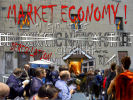 The media’s treatment of the recent tragedy of migrants drowning off the Italian island of Lampedusa was predictable. Whenever a local population—whether it be in Greece, Italy, or elsewhere—is inundated with a flood of refugees, a standard news template is applied.
The media’s treatment of the recent tragedy of migrants drowning off the Italian island of Lampedusa was predictable. Whenever a local population—whether it be in Greece, Italy, or elsewhere—is inundated with a flood of refugees, a standard news template is applied. 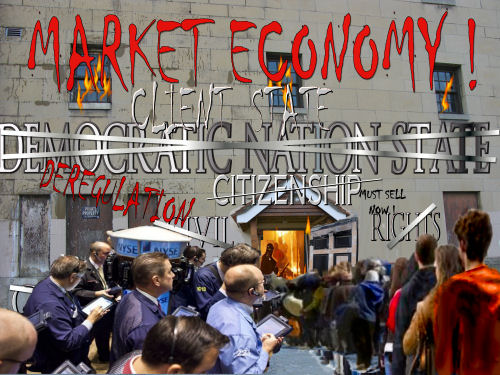 And the host society and its politicians have an unequivocal moral obligation to meet migrants’ demands, notwithstanding the burdens of preserving a tattered social safety net in the midst of austerity measures and high unemployment in many Mediterranean countries.
And the host society and its politicians have an unequivocal moral obligation to meet migrants’ demands, notwithstanding the burdens of preserving a tattered social safety net in the midst of austerity measures and high unemployment in many Mediterranean countries.
 The Greens are at the crossroads as a political party — should they focus on the wider concerns of the electorate, or should they stick to environmentalism? For instance, the humanitarian crying out for the suffering of refugees needs to be focused on what drives people to become refugees, like our engagement in unjust wars, environmental damage and over-population. Dr Peter Cock says they need to stay green. [Comment from Candobetter.net editor: Some of us here think the Greens need to rebrand if they don't become green, but we appreciate the discussion in this article, which targets our concerns.]
The Greens are at the crossroads as a political party — should they focus on the wider concerns of the electorate, or should they stick to environmentalism? For instance, the humanitarian crying out for the suffering of refugees needs to be focused on what drives people to become refugees, like our engagement in unjust wars, environmental damage and over-population. Dr Peter Cock says they need to stay green. [Comment from Candobetter.net editor: Some of us here think the Greens need to rebrand if they don't become green, but we appreciate the discussion in this article, which targets our concerns.]

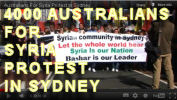 This is a fascinating video of a huge protest in Sydney on 5 August 2012 and we have put up a video of it with a number of interesting interviews from marchers, with comments from what they think of the Bashar Assad Government to how they don't like the Australian Greens policy on this matter and believe that we are risking World War Three by backing intervention in Syria. There is also some background on how Syria has been the long-term host one of the largest refugee populations in the world, which makes you wonder why it doesn't receive more support from Greens and Refugee activists. It must seem ironic that some candobetter.net EcoMalthusians are more inclined to give Syria that recognition! Please let us know if you have views on the democratic status of the Syrian government; we find it hard to judge. All comments and greetings welcome.
This is a fascinating video of a huge protest in Sydney on 5 August 2012 and we have put up a video of it with a number of interesting interviews from marchers, with comments from what they think of the Bashar Assad Government to how they don't like the Australian Greens policy on this matter and believe that we are risking World War Three by backing intervention in Syria. There is also some background on how Syria has been the long-term host one of the largest refugee populations in the world, which makes you wonder why it doesn't receive more support from Greens and Refugee activists. It must seem ironic that some candobetter.net EcoMalthusians are more inclined to give Syria that recognition! Please let us know if you have views on the democratic status of the Syrian government; we find it hard to judge. All comments and greetings welcome.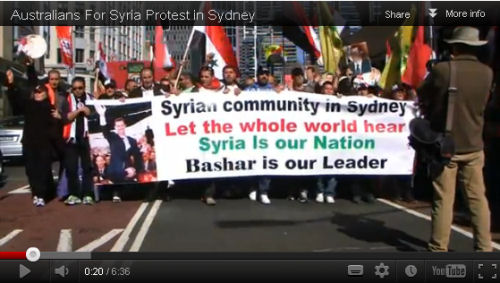


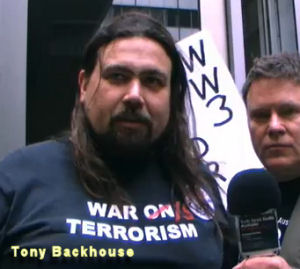
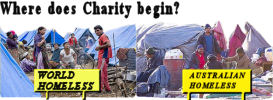 Both sides of parliament are saying that the problem is asylum seekers dying at sea as they attempt to reach Australia. Other groups claim that we are "racist" and "xenophobic" for being heartless, and that we have the capacity for an open-door approach of the Greens. There are probably millions, if not billions of impoverished, persecuted peoples who see Australia as a "rich" country and an ideal soft target for resettlement. This is despite the pressure on jobs, housing, infrastructure, food security and environmental concerns. If we need to make a deal with Malaysia, or Indonesia, we should be free to do so. The solution is to discard our alliance with the UN Refugee Convention.
Both sides of parliament are saying that the problem is asylum seekers dying at sea as they attempt to reach Australia. Other groups claim that we are "racist" and "xenophobic" for being heartless, and that we have the capacity for an open-door approach of the Greens. There are probably millions, if not billions of impoverished, persecuted peoples who see Australia as a "rich" country and an ideal soft target for resettlement. This is despite the pressure on jobs, housing, infrastructure, food security and environmental concerns. If we need to make a deal with Malaysia, or Indonesia, we should be free to do so. The solution is to discard our alliance with the UN Refugee Convention.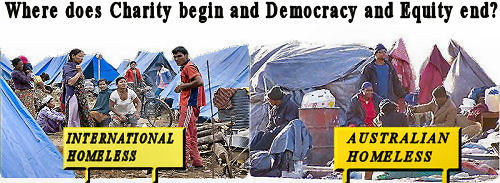
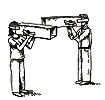
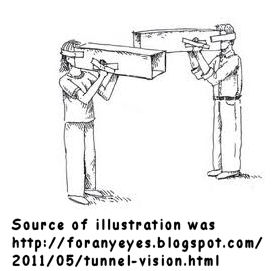
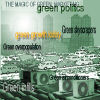 Fear of 'boat-people' coming in massive numbers will continue to be stoked by the Murdoch and Fairfax media and tv and radio. Some people will therefore continue to fear the Greens as agents of the 'boat-people' bogeyman. Others will fear them as politicians who would see their countrymen dispossessed by a strange and unaccountable rhetoric.
Fear of 'boat-people' coming in massive numbers will continue to be stoked by the Murdoch and Fairfax media and tv and radio. Some people will therefore continue to fear the Greens as agents of the 'boat-people' bogeyman. Others will fear them as politicians who would see their countrymen dispossessed by a strange and unaccountable rhetoric. 
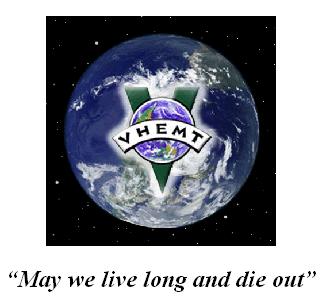
.jpg)
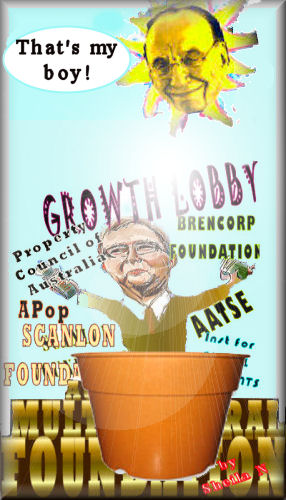

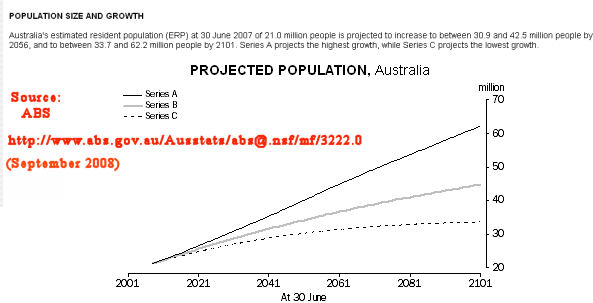

Recent comments